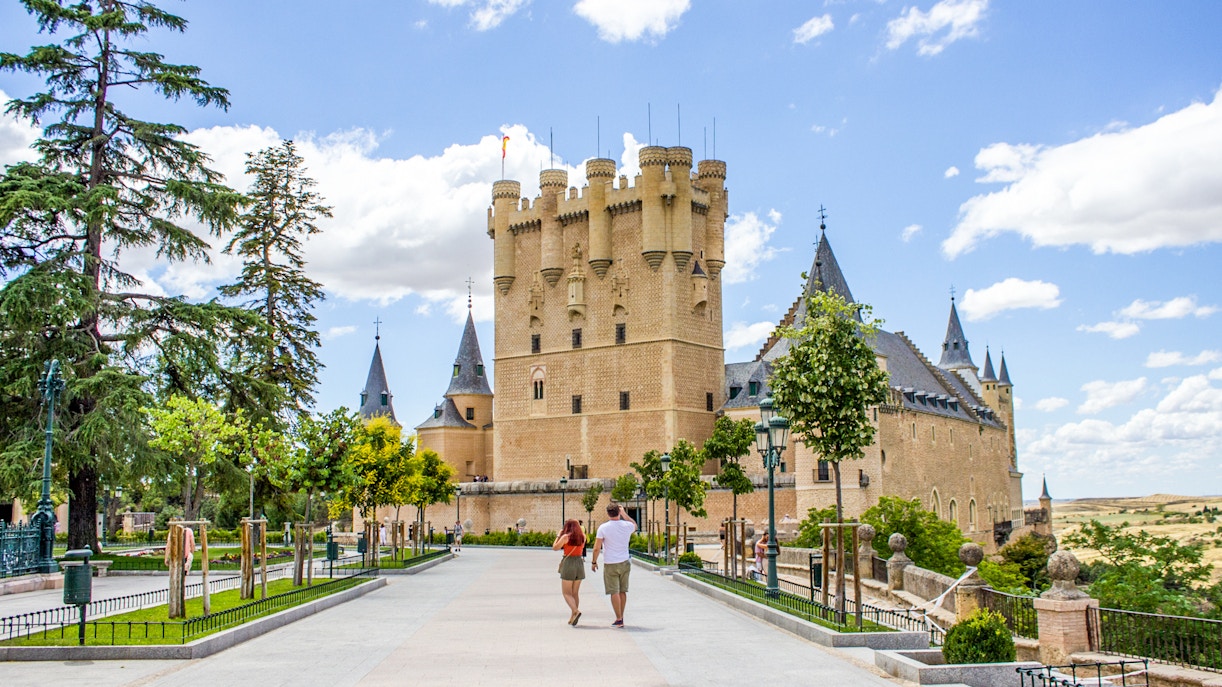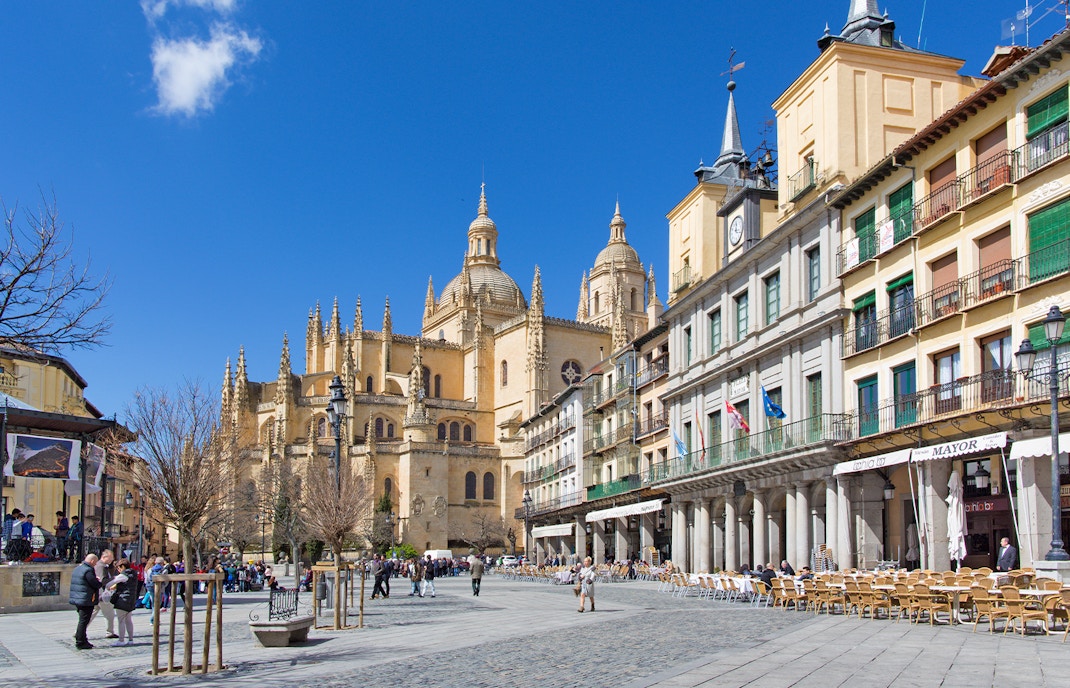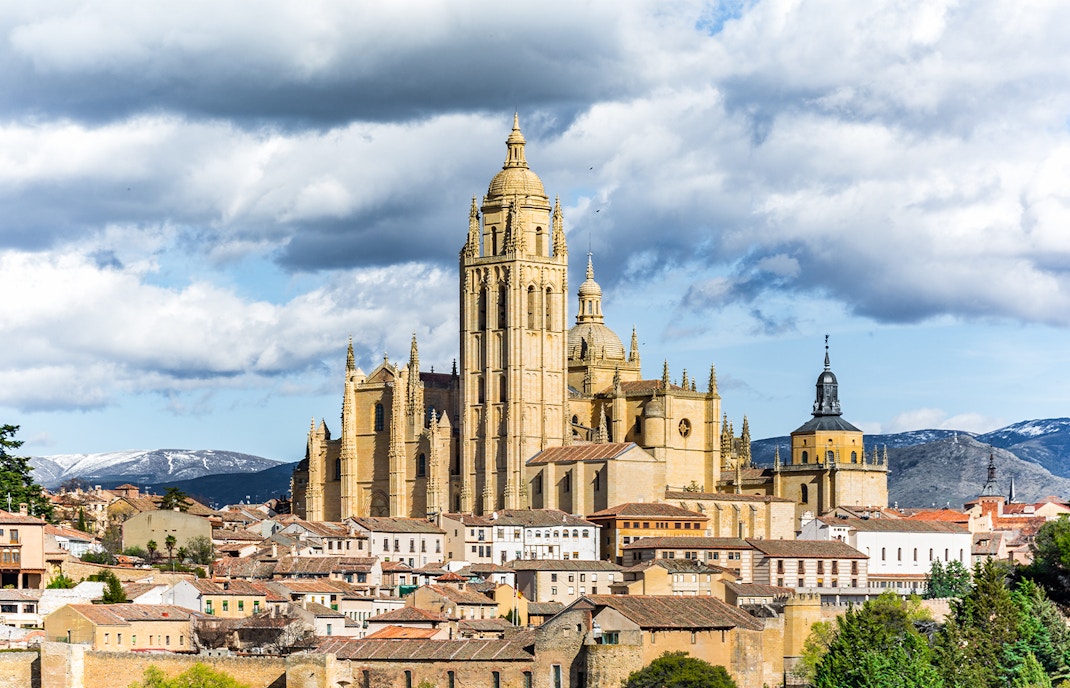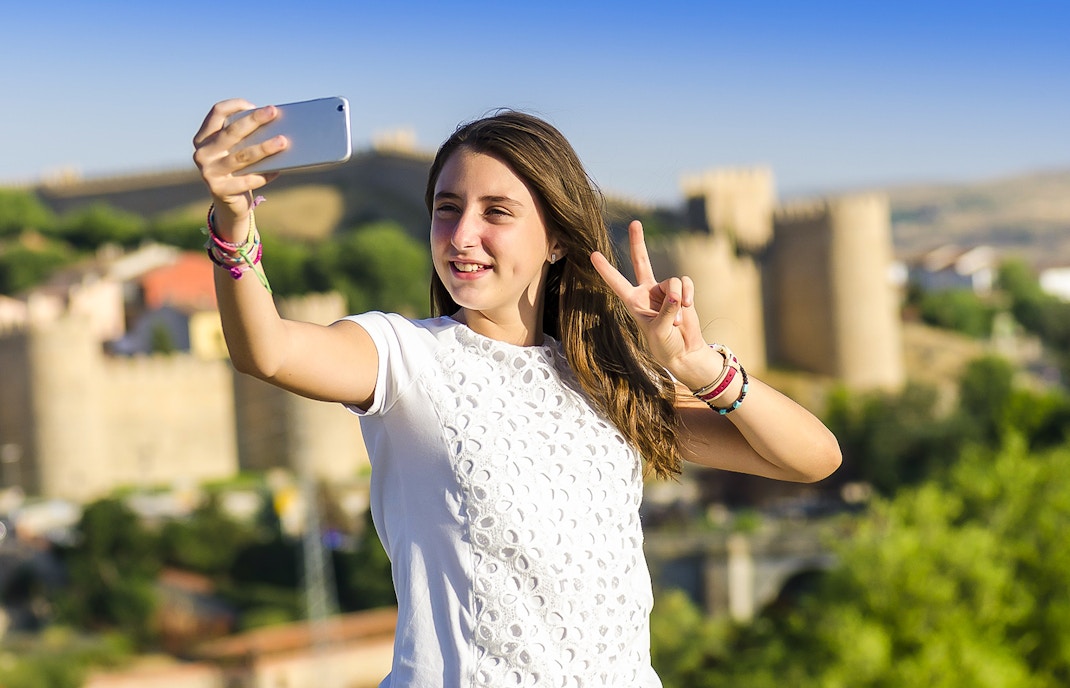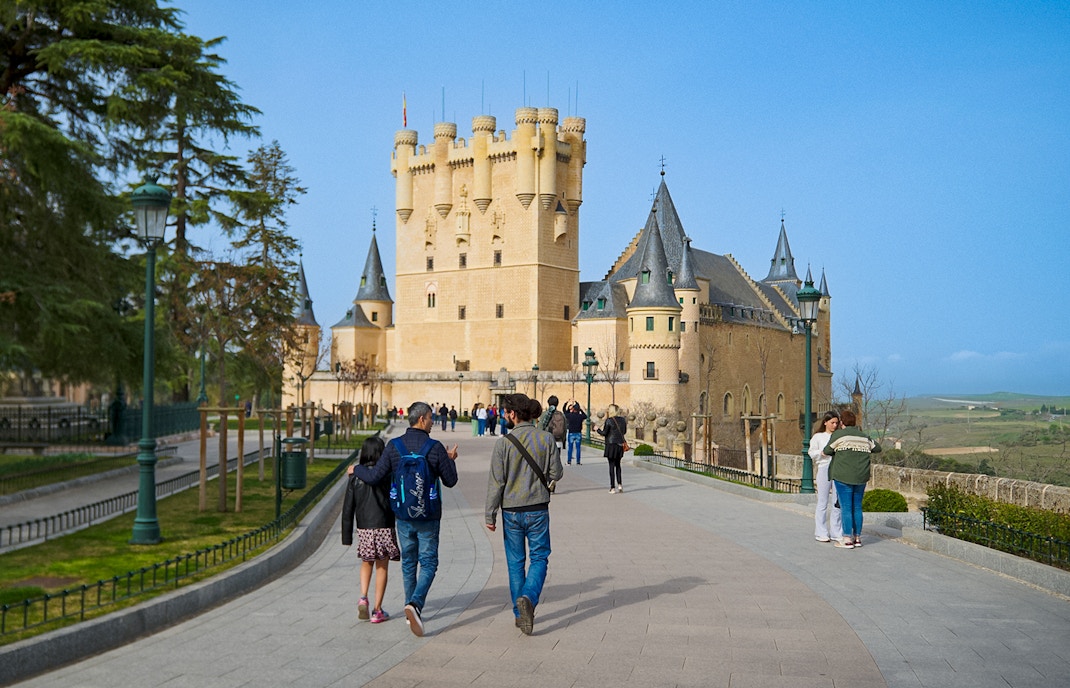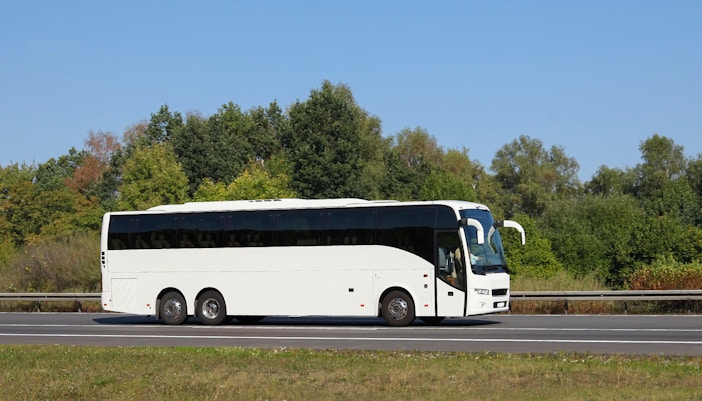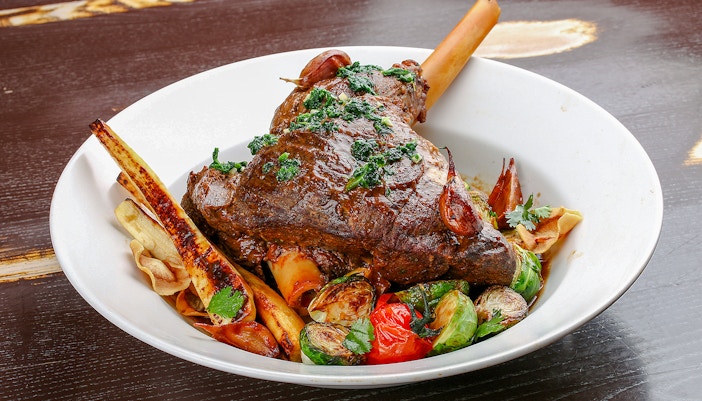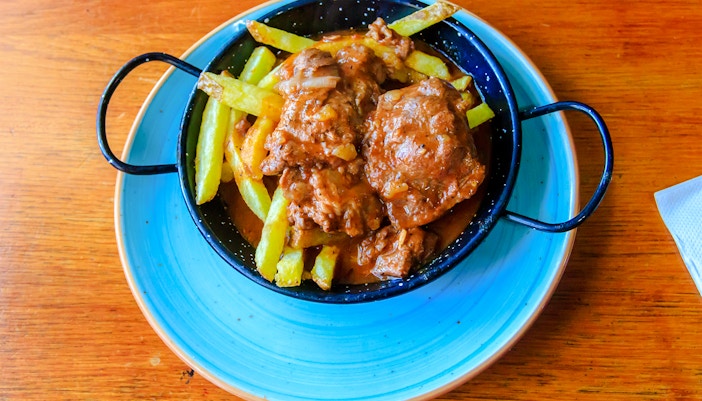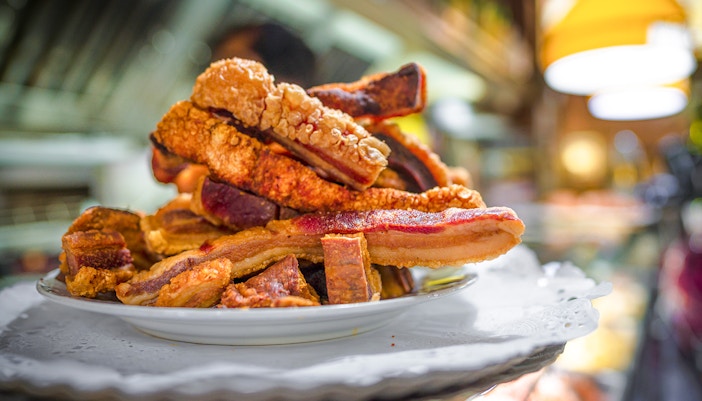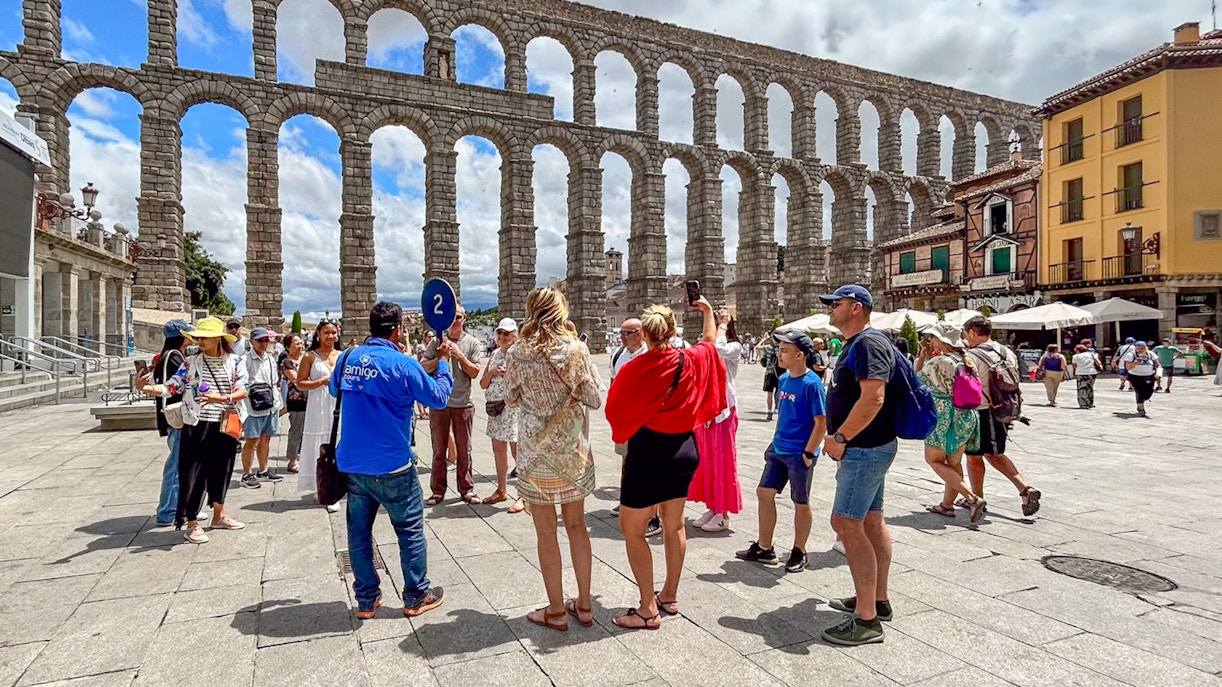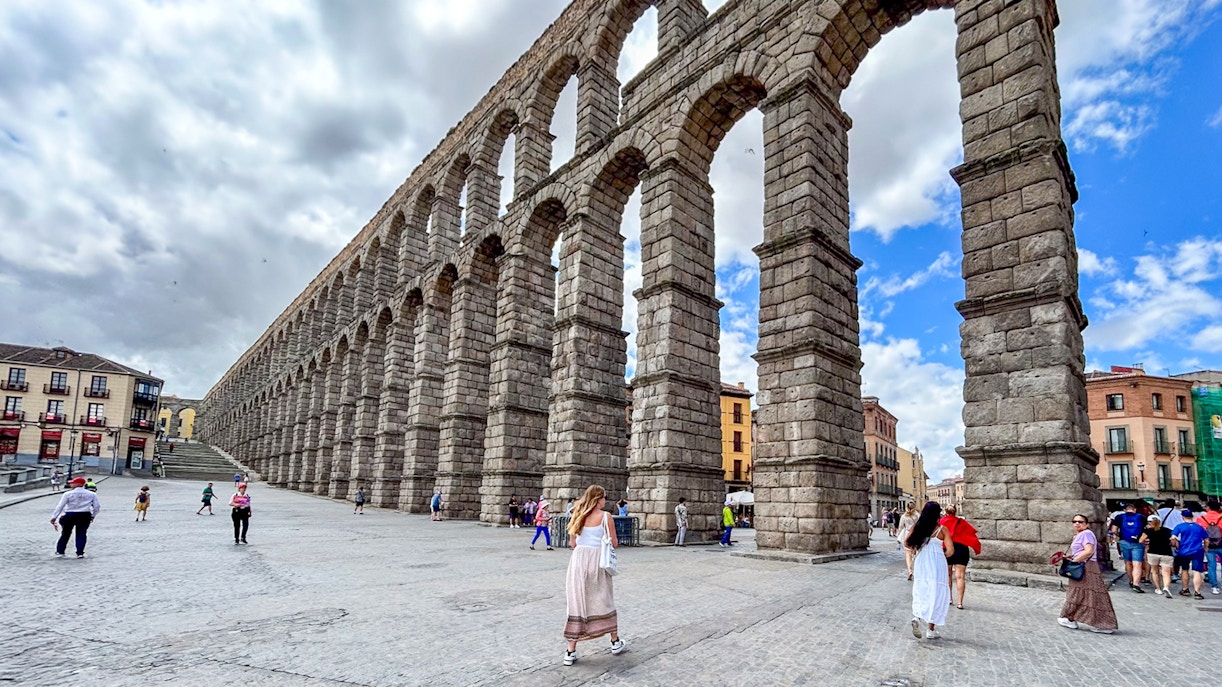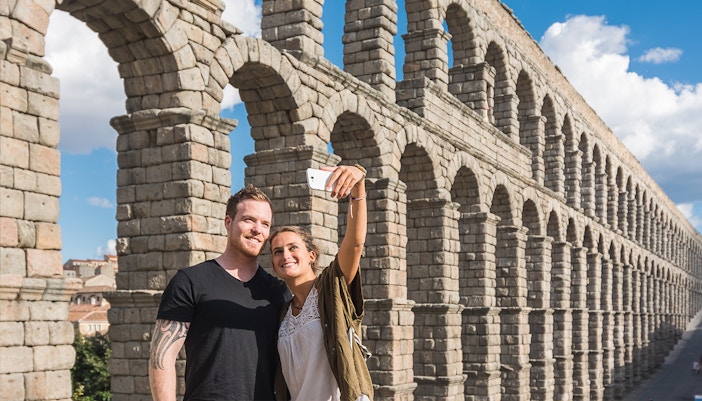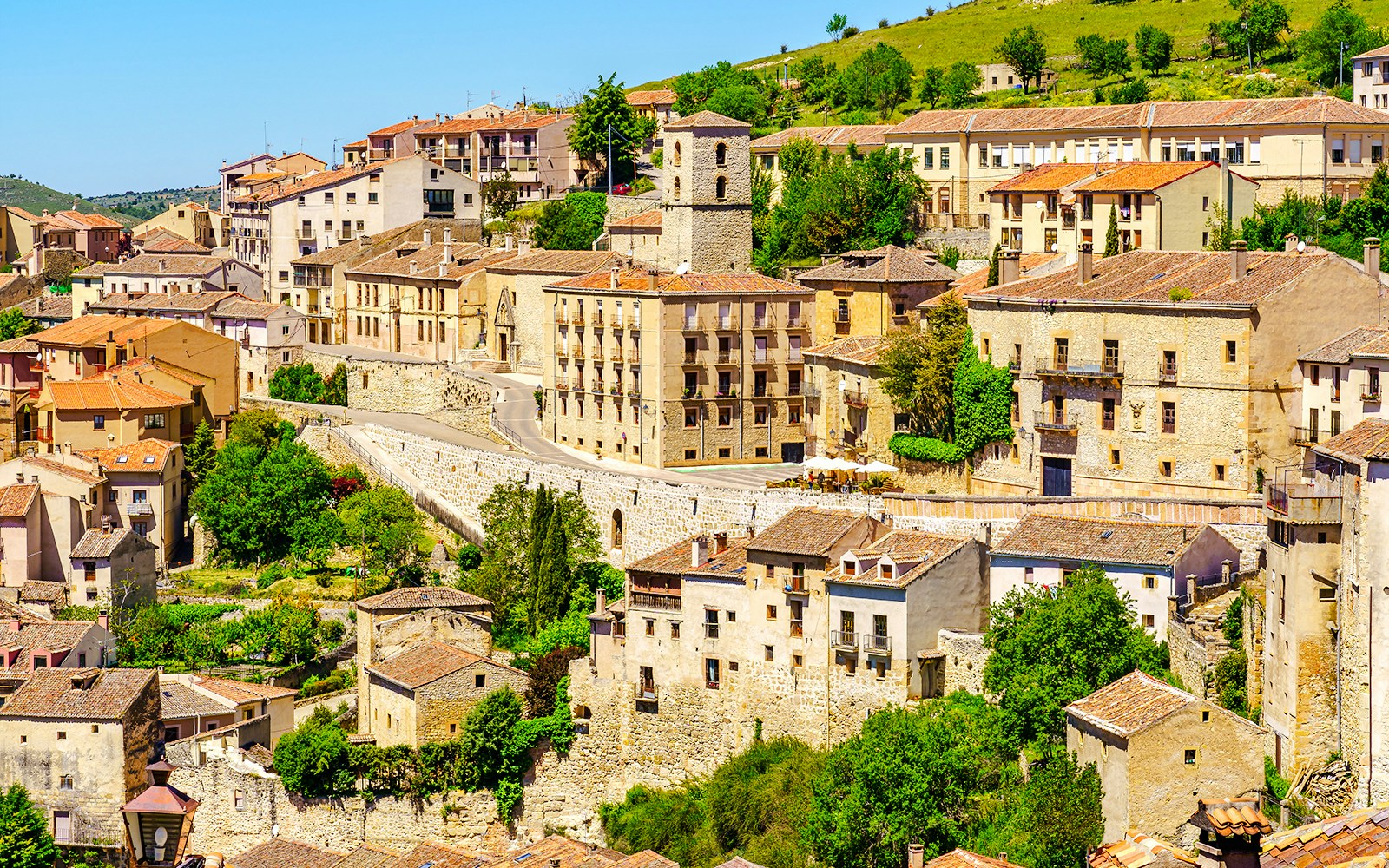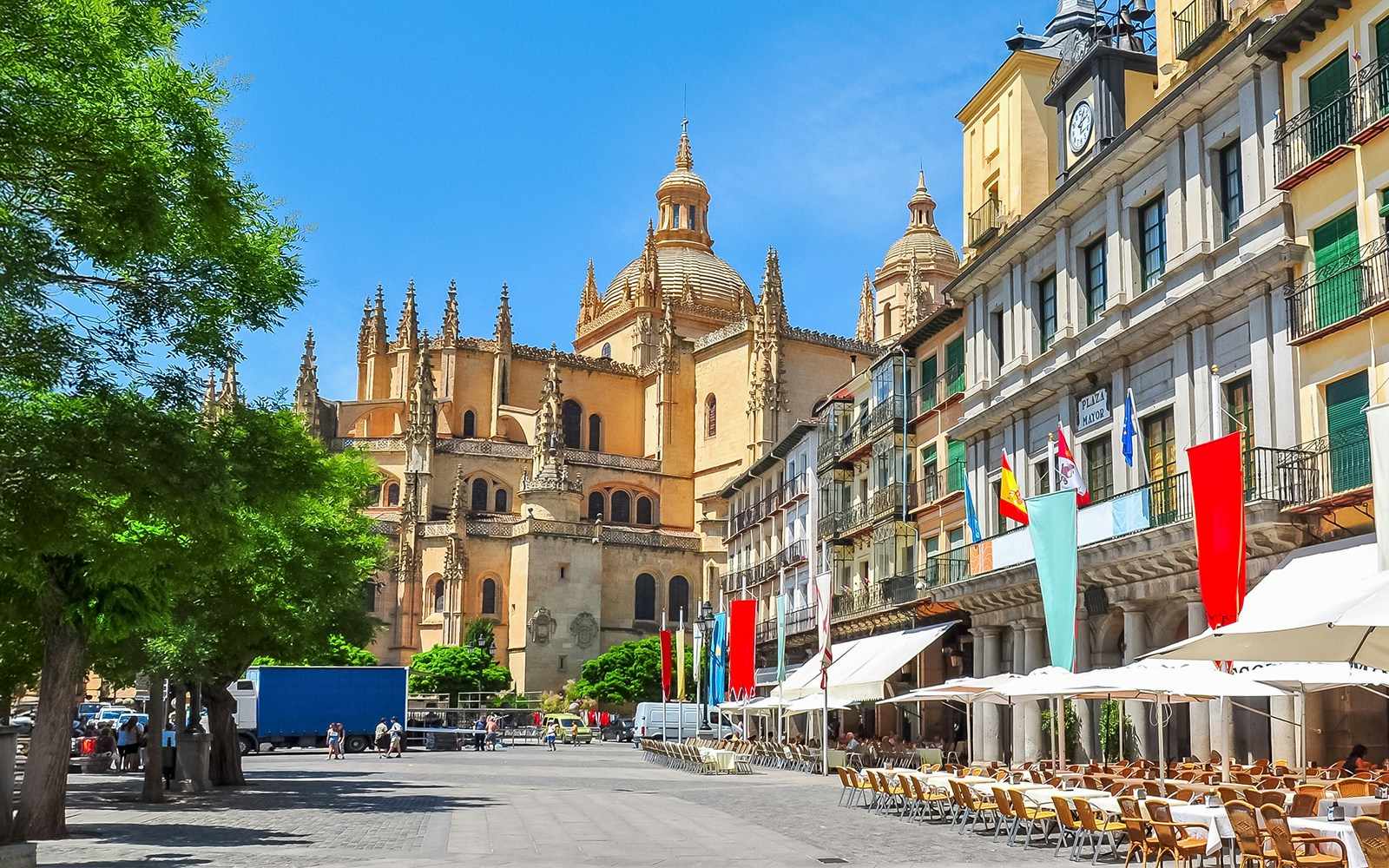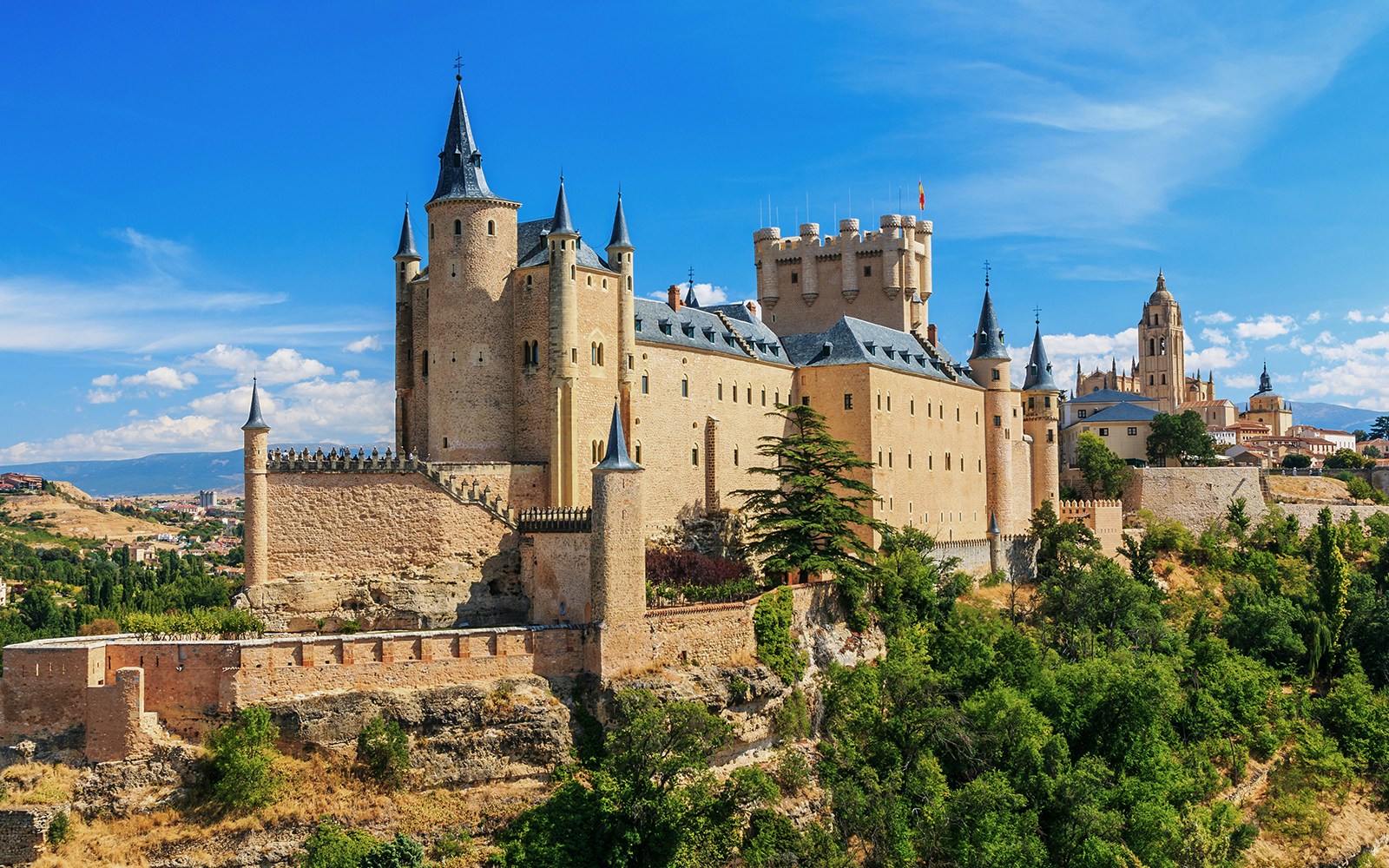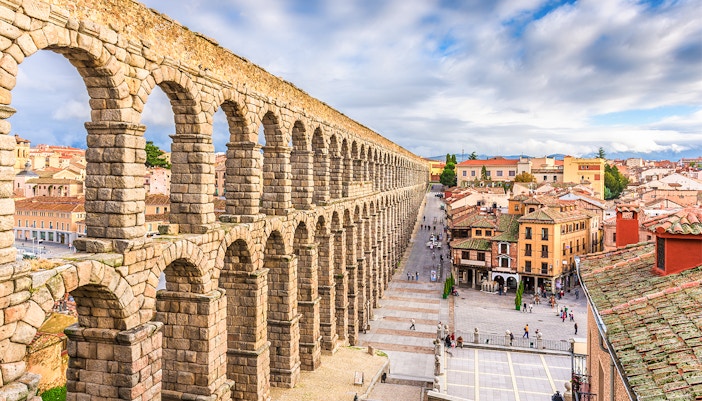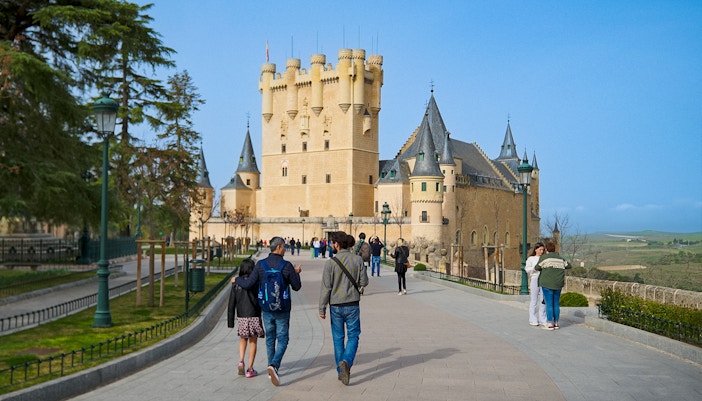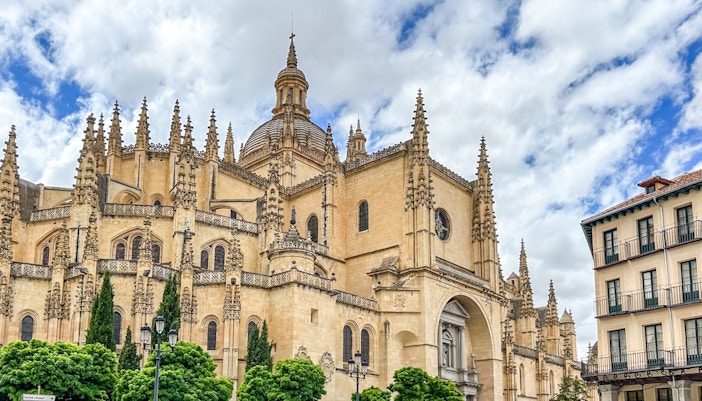What is the best time to visit Segovia?
- The best time to visit is spring (April-June) or autumn (September-October), when the weather is pleasant, the crowds are thinner, and the city feels just right for wandering. Summer is lively but hot and busy, while winter is quieter and snowy.
Where is Segovia located?
- Segovia is in central Spain, about 90 km northwest of Madrid, in the Castilla y León region.
How many visitors does Segovia see per year?
- Over 1.5 million visitors explore Segovia annually
What is Segovia famous for?
- This UNESCO World Heritage city is known for its 2,000-year-old Roman Aqueduct, the fairy-tale Alcázar, and cochinillo asado (roast suckling pig).

